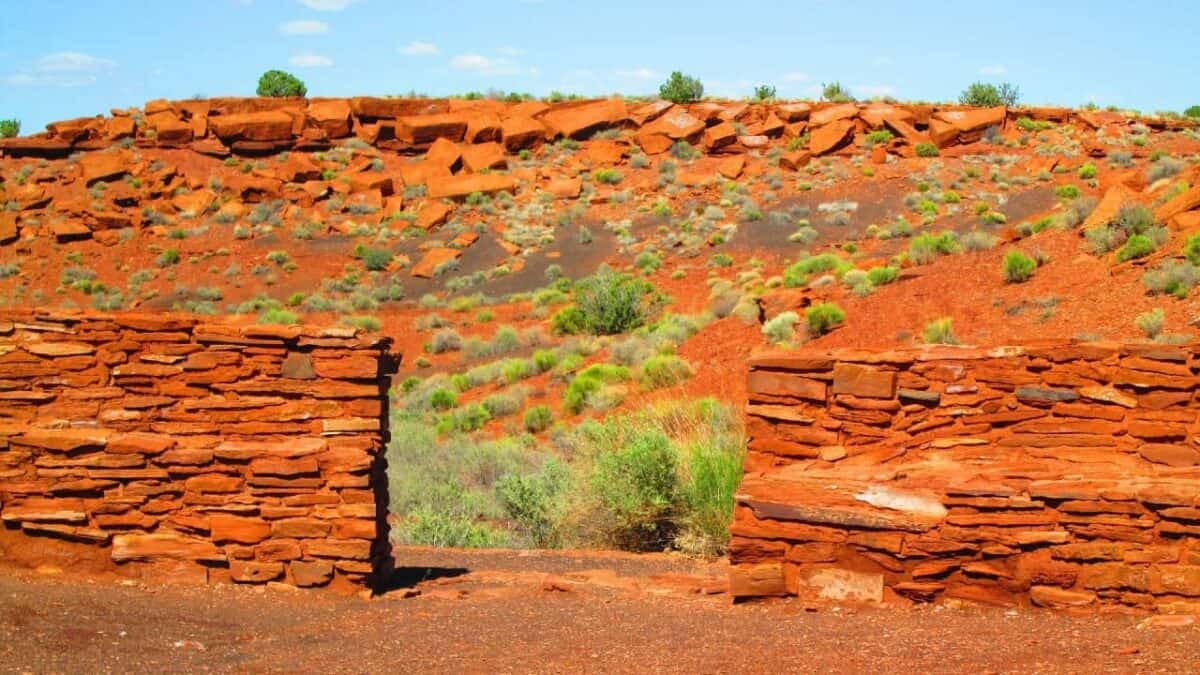Flagstaff, Arizona, is a perfect destination for every camping enthusiast. With the San Francisco Peaks mountain range, thousands of acres of National Forest, as well as the fact that it’s close to both the National Parks and the National Monuments, Flagstaff is undoubtedly a phenomenal destination for anyone in love with the Great Outdoors.
However, what makes it truly great is that it’s a fantastic choice for all those interested in dispersed camping – i.e. camping outside of designated campgrounds – due to all this public land that surrounds the city.
You can literally wake up in your tent and choose between summiting Humphreys Peak (Arizona’s highest mountain), cycling on some of the country’s best bike trails, or just exploring Flagstaff’s bustling downtown.
To make camping around Flagstaff easier for you, I’ve decided to put together a list of the very best dispersed camping areas that are situated in close proximity to this city and tell you everything you need to know about them.
Map of Dispersed Camping Areas Near Flagstaff
You can easily find the locations of the best dispersed campgrounds near Flagstaff using this map.
The Overview
Before everything else, let’s go over the basics. In this part of the article, I’ll provide all the information you’ll need in order to plan a successful dispersed camping adventure near this city.
This includes the best time for embarking on such an escapade, the gear you’ll have to pack, as well as some info on pets, fees, permits, fires, and recently closed areas. Read this essential information before planning your trip.
When is the Best Time to Camp Near Flagstaff?
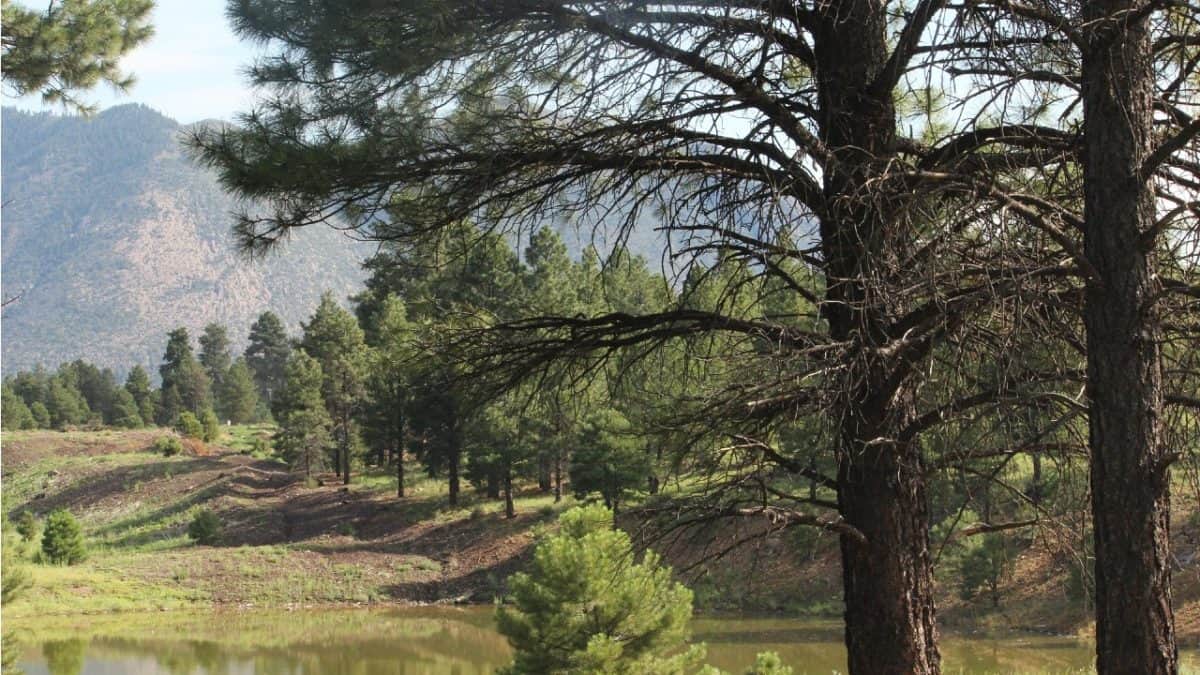
Flagstaff, the seat of Coconino County, sits with one foot in the mountains and the other in the desert. In other words, its geographical location is quite unique.
The city is located at the base of the aforementioned Humphreys Peak, the highest of the San Francisco Peaks and the highest mountain of the state of Arizona itself. Due to this, the city sits at almost 7,000 feet above sea level – almost all outdoor enthusiasts who come here do so because they’re interested in high-altitude camping.
With that in mind, the best time to do some camping near this city is generally from April to October. This timeframe has to be shortened by one to two months if you’re planning to camp high up in the San Francisco Peaks. Similarly, the period can be extended – also by one to two months – when it comes to dispersed camping at the lower elevations.
If you want to camp near Flagstaff for a really long time, your best option is to do so in an RV.
What Should I Pack for Dispersed Camping Near Flagstaff?
Let’s be honest here – the backcountry that surrounds this city is quite rugged and harsh. As I already said above, Flagstaff is located where the mountains meet the desert, so it’s quite important to adequately prepare yourself for camping in such a location.
This is particularly true for those interested in dispersed camping in Arizona, and particularly Flagstaff, since such individuals won’t be able to use the facilities that are often found in developed campsites.
I’m sure that you already have the most important things, like your tent and the sleeping bag(s). Here’s some other gear you may want to consider bringing with yourself if you’re planning to do some dispersed camping near Flagstaff:
- Cooler – Everybody who ever camped near this city knows everything about the importance of keeping food and drinks cold. Get yourself a quality, portable cooler and you’ll have no problems.
- Portable water container – None of the dispersed camping spots in this article have access to clean, drinkable water. Obviously, this turns a portable water container into an absolutely essential piece of gear. You may want to check out our Klean Kanteen vs Hydro Flask comparison if you are looking for a new water bottle.
- Camping stove – Every camping adventure is much better when you’re able to eat cooked and fried meals. And to make tasty campsite dinners, you will need a portable camping stove.
- Map – It goes without saying, but exploring a harsh, rugged area as a camper should never be done without a good map. For the Flagstaff and Sedona region, I would recommend checking out the National Geographic maps – they’re the best.
Check out our wild camping essentials guide for more information.
Permits and Fees Required for Dispersed Camping Near Flagstaff
One of the best things about dispersed camping is the fact that it requires no fees or permits. The same goes for dispersed camping near Flagstaff. There are no associated fees or required permits for any of the dispersed camping areas near this city.
But still, it’s never a bad idea to do a bit of research online before setting out on an outdoor adventure. For most up-to-date info, make sure to contact the Flagstaff Ranger District.
Have Any of the Flagstaff Dispersed Camping Areas Been Recently Closed?
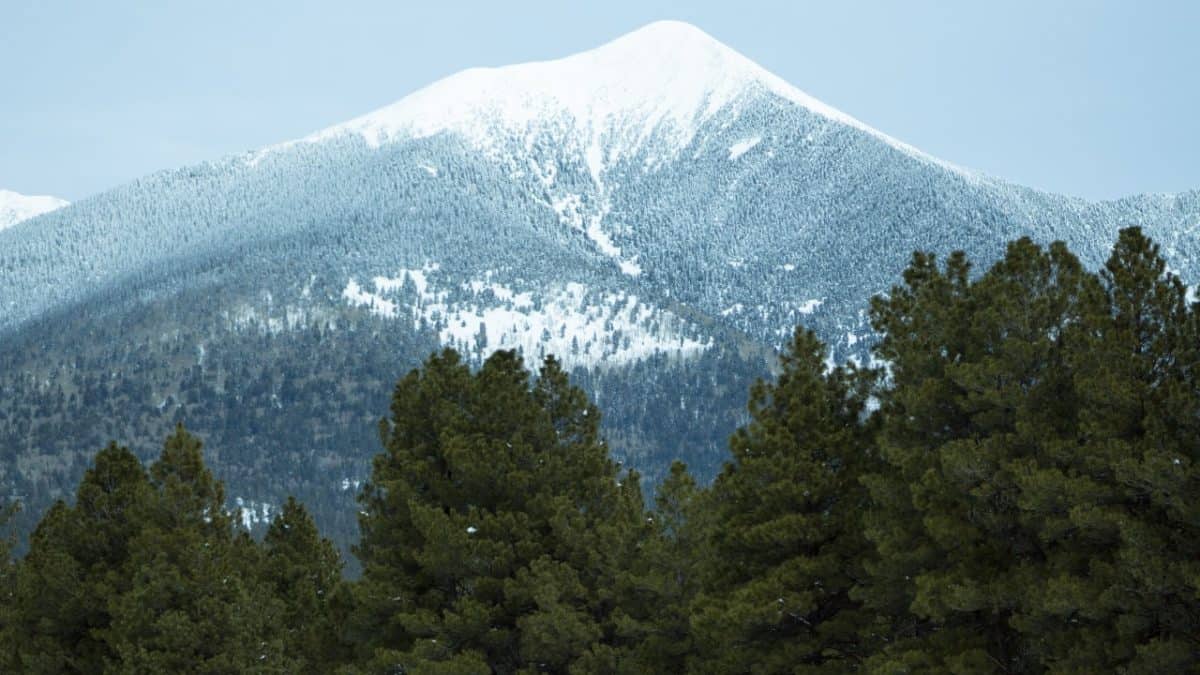
Due to the fact that some of the dispersed camping areas near this city have been closed and opened quite recently, it’s very important that you inform yourself on this matter before heading out.
For example, one of the most popular dispersed camping areas, the Schultz Pass Road, has been closed through the Forest Service Order 03-04-20-5-F. If one of the areas you intended to camp in is now closed, keep in mind that it’s probably going to reopen in the upcoming months, and just observe the closure.
If you are interested in other camping locations in the US, check out our post on the best dispersed camping near Buena Vista, Colorado as well. We also have a guide to dispersed camping near Silverton, Colorado.
What Should I Know About Seasonal Fires Near Flagstaff?
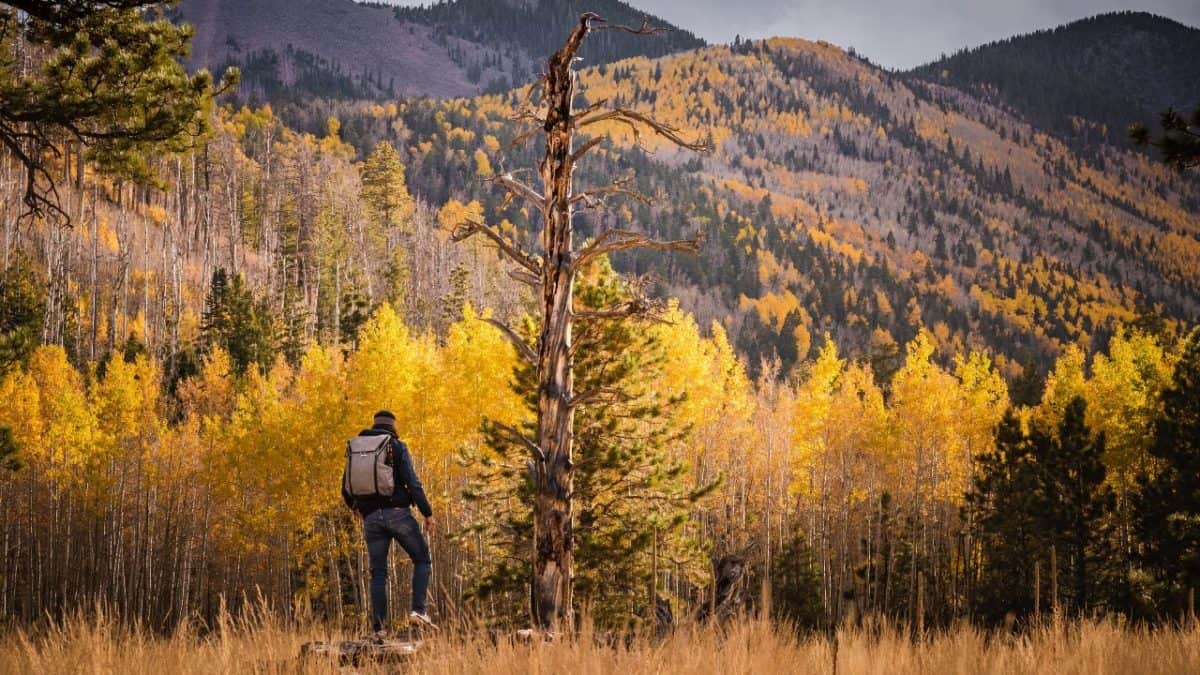
In the backcountry that surrounds Flagstaff, Arizona, seasonal fire bans and restrictions are quite common. It goes without saying, but it’s extremely important that every camper checks and obeys all such restrictions.
In recent years, the wilderness around this city has been devastated by a couple of catastrophic wildfires. For that matter, do not make a campfire if making one is not allowed in the particular area you’re camping in.
Before heading out, check the fire restrictions on the Coconino National Forest section of the USDA’s website. Also, keep in mind that making campfires is banned permanently in several places, such as Pumphouse Wash or Oak Creek Canyon.
If you are allowed to make a campfire, it’s vital that you put it out completely every time you’re about to go to sleep or leave your camping spot, regardless of how long you’ll be away.
Are Pets Welcome at Flagstaff Dispersed Camping Areas?
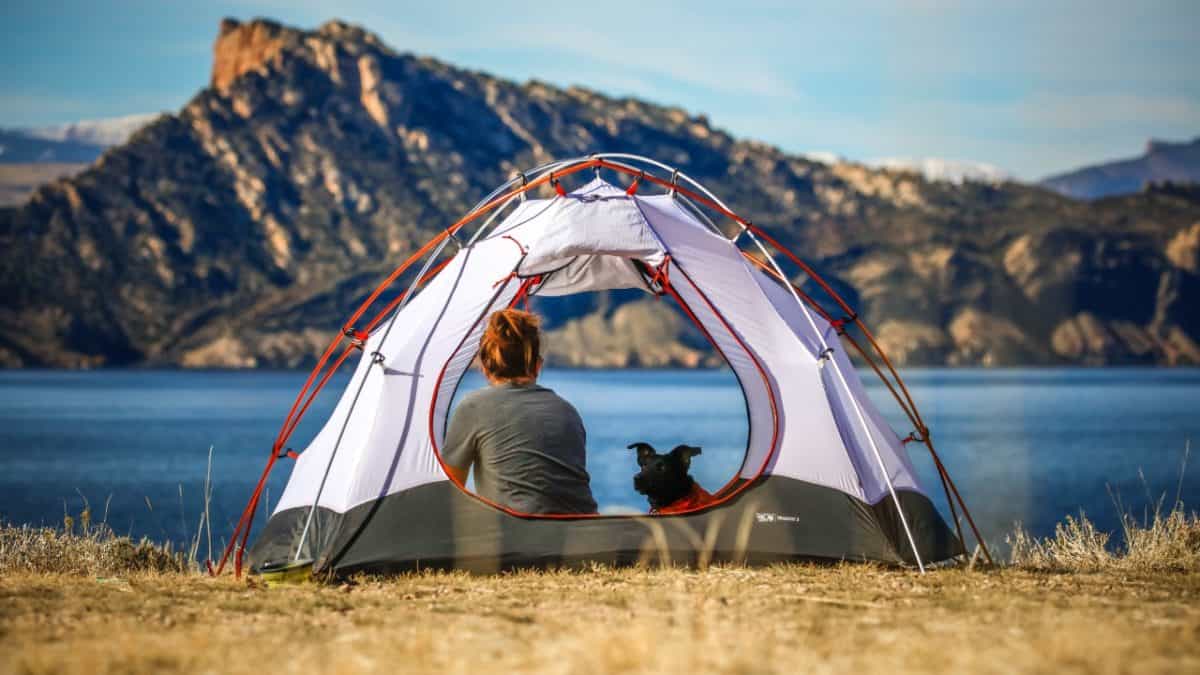
Yes, they are – if you want, you can bring your pet(s) to a camping adventure near Flagstaff.
However, an important thing to mention here is that you’ll have to keep your animal under control at all times. This is particularly essential in regions where there might be other campers nearby or any kind of wildlife.
Also, don’t forget to protect your pet from extreme temperatures and make sure to pack its waste.
Other Important Considerations
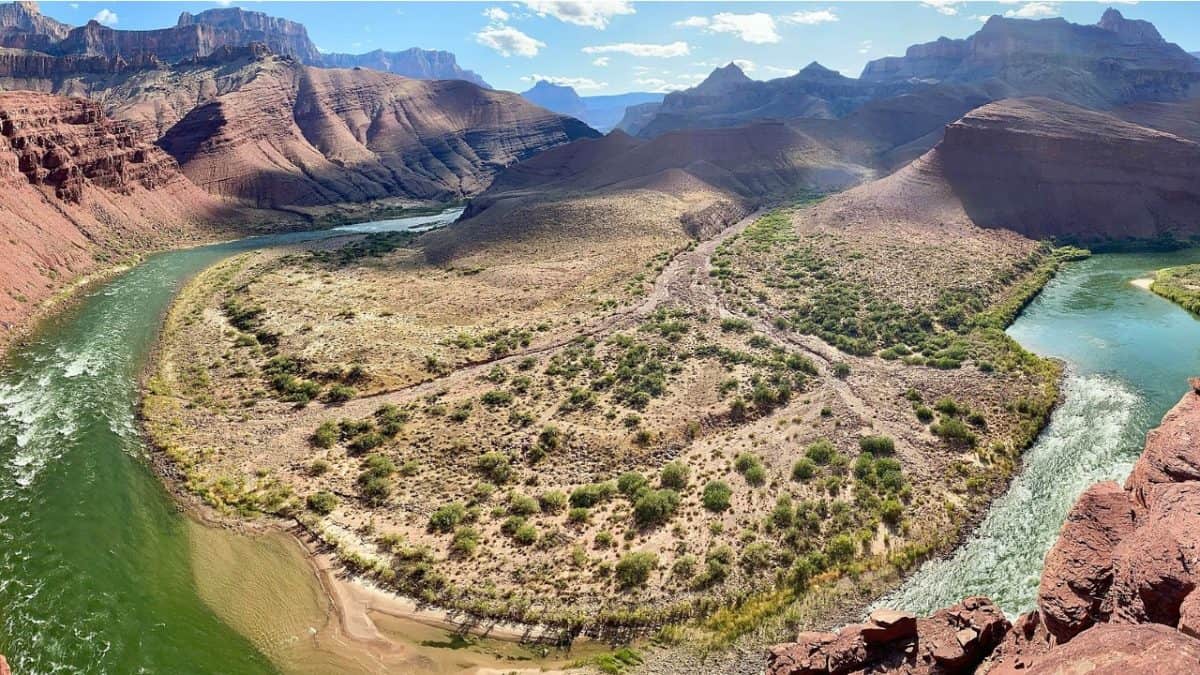
- Impact on the environment – With each passing year, Flagstaff dispersed camping is becoming more and more popular. The result of this is pretty obvious – an increased impact on the environment.
It goes without saying, but this is precisely why it’s important to always – and I repeat, always – practice the “leave no trace” principles and do everything in your power to keep the areas around Flagstaff open for hiking and dispersed camping. Give your best to leave the campsite in the exact (or better!) shape than you found it in.
- First-come, first-served – All of the dispersed camping areas I will describe below function on the “first-come, first-served” principle.
In other words, they fill quite quickly. This is particularly true when it comes to summertime weekends. To secure a site, you may have to get there a few days in advance.
- Water – As I already mentioned, none of the dispersed camping spots in this article have reliable water sources.
This is why it’s crucial to come up with a plan on how you’ll be getting the water while you’re there. Another (and simpler) solution would be to just bring all the water you’ll need.
- Access – In this article, I have done my best to provide all the necessary information on the quality of roads that lead to each of the Flagstaff dispersed camping areas.
A lot of these places are easily accessible by regular passenger vehicles. Unfortunately, however, some of them are not – in order to reach them, you will need a high-clearance or 4WD vehicle.
The Best Areas for Dispersed Camping Near Flagstaff, Arizona
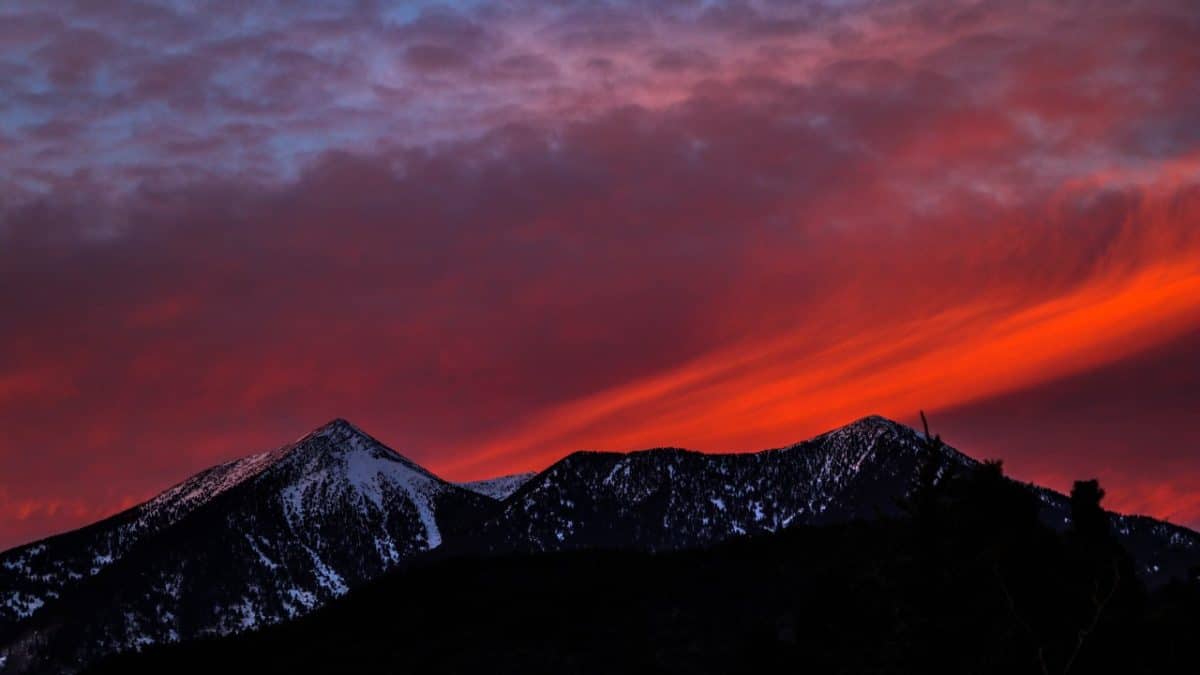
As its name suggests, this section of the article provides a list of the best spots that are suitable for dispersed camping and which are in close proximity to Flagstaff. Here’s everything you need to know about them:
Forest Service Road 171
- Crowds: Moderate
- Water: No
- Restrooms: No
- Distance to Flagstaff: 13 miles
Situated on the opposite side of the Forest Service Road 222, which I’ll describe next, the Forest Service Road 171 can be accessed from Interstate 40.
It’s a phenomenal dispersed camping area with smooth roads and large campsites – a perfect option for all those who have just entered the world of outdoor exploits. Here, you’ll have a plethora of campsites to choose from while being less than half an hour away from the city.
To reach the Forest Service Road 171, take the aforementioned Interstate 40 west from the city for around 10 miles and then turn north. And once you’ve turned north (onto the FR 171), keep going for a mile or two and simply choose yourself a campsite.
Make sure to adequately prepare yourself before coming here – there are no dependable water sources along the FR 171.
Forest Service Road 222
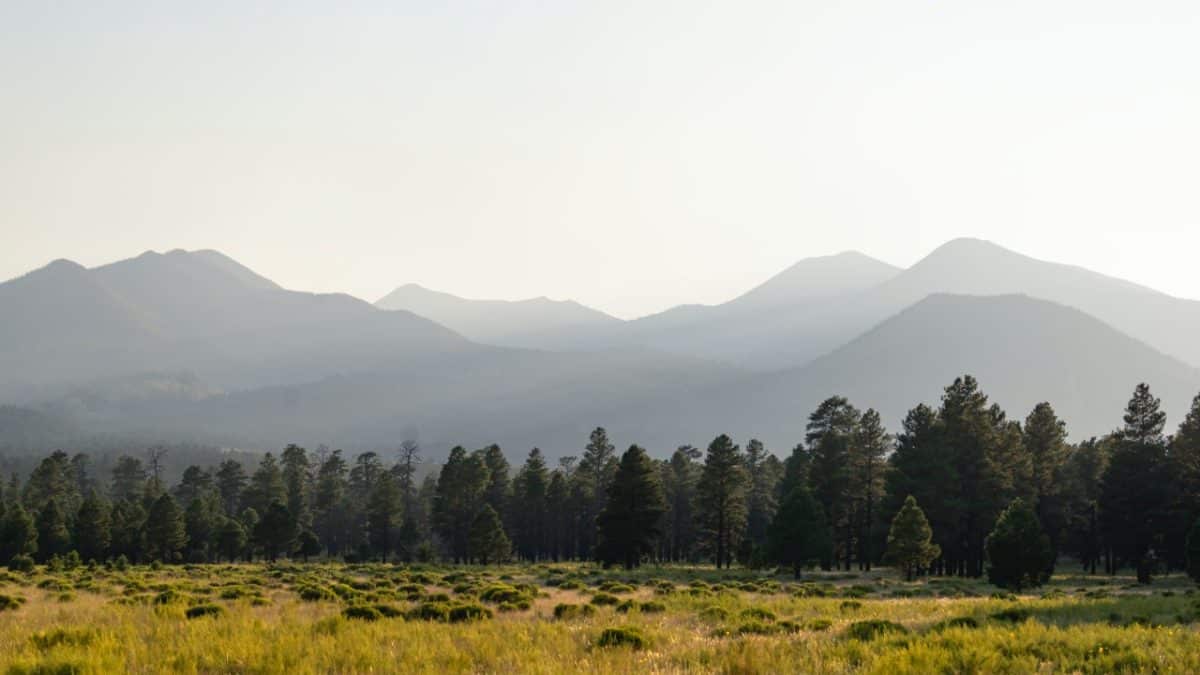
- Crowds: Moderate
- Water: No
- Restrooms: No
- Distance to Flagstaff: 9 miles
Situated northwest of Flagstaff, the Forest Service Road 222 is among the best dispersed camping spots in the vicinity of this city. It’s just off Highway 180 and can be traversed by pretty much any vehicle.
Due to the fact that accessing this place is as easy as it gets, Forest Road 222 is very popular with the campers. What is more, this road itself provides easy access to the breathtaking San Francisco Peaks, as well as the aforementioned Highway 180, and thus makes it easy to reach the famous Grand Canyon from there (See our post on primitive camping near Grand Canyon for more info).
Getting to the Forest Service Road 222 is very straightforward. Use Highway 180 to get out of Flagstaff from the northern side and drive on it for about 8 miles. You will notice FR 222 on the left side of the road.
And once you’re on this road, you will see that the camping spots start immediately after you come off the highway. There’s a plethora of them and they continue for the road’s length, so it’s pretty easy to choose a good one for yourself. Just make sure to bring plenty of water and other necessary provisions.
Freidlein Prairie
- Crowds: Busy
- Water: No
- Restrooms: No
- Distance to Flagstaff: 10 miles
One of the best things about this particular area is that it provides outdoor enthusiasts with 14 designated dispersed campgrounds, and camping at each of these spots is completely free.
The Freidlein Prairie dispersed camping area was established for a good reason – over the years, careless campers had a very negative impact on the surrounding wilderness. It’s a phenomenal area to set up your tent in and it’s less than 20 minutes away from Flagstaff.
Freidlein Prairie is a particularly great option for those planning to climb the highest point of the San Francisco Peaks – Humphreys Peak – since it’s quite close to the primary trailhead. What is more, all of the designated campgrounds in Freidlein Prairie have enough space for at least one tent and each of them is marked and has a fire ring.
Keep in mind that RVs are not recommended for this area because of the size of the campgrounds. Also, make sure to bring enough water with you, as there are no reliable water sources in the region. It goes without saying, but don’t forget to pick up your own trash as well!
How does one get to the Freidlein Prairie? Use Highway 180 to get out of Flagstaff from the northern side of the city and then turn right onto Snowbowl Road. Once there, drive for about two miles and take a right once you notice the “FR 522” sign. From there, search for the campgrounds – most of them will be on the road’s southern side.
If you would rather go camping on the other side of the Atlantic, check out the 10 best wild camping spots in the UK.
Forest Service Road 151
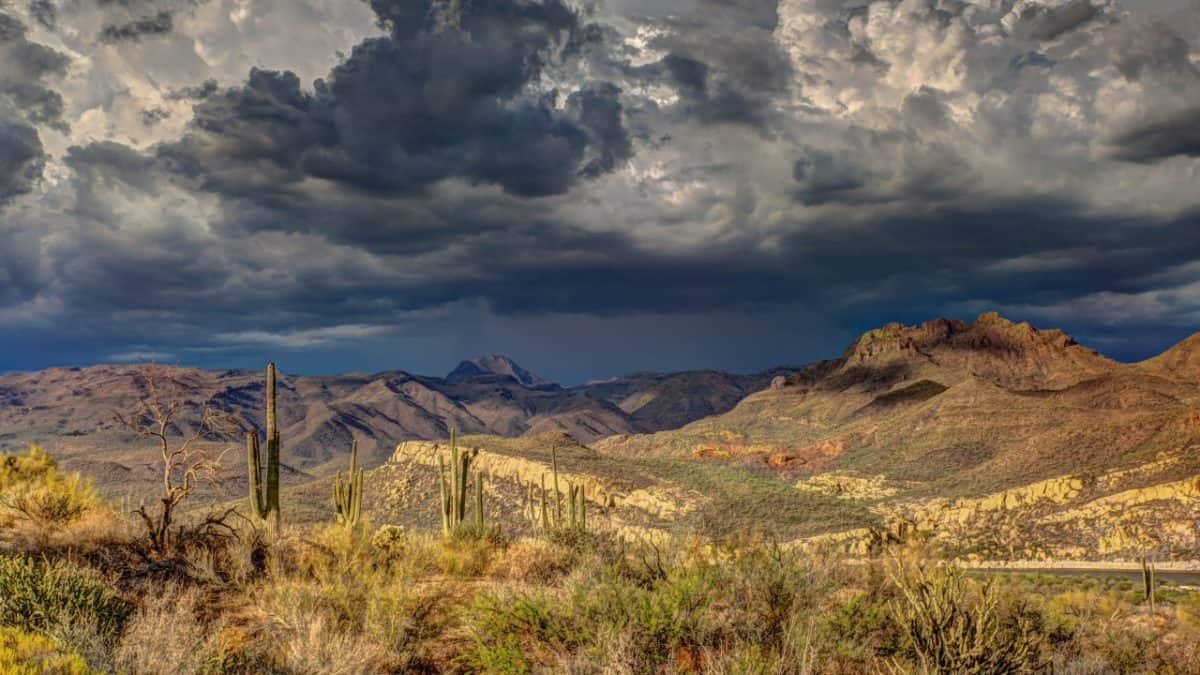
- Crowds: Moderate
- Water: No
- Restrooms: No
- Distance to Flagstaff: 11 miles
Next up on my list of Flagstaff dispersed camping areas is the Forest Service Road 151, which is situated very close to the Wing Mountain sites (FR 171 and FR 222, which I have described above). One big difference between those areas and this one is that Forest Service Road 151 is far less crowded.
With smooth roads that lead to the campgrounds and easy access to Highway 180, this place is an excellent option for anyone interested in dispersed camping near Flagstaff.
There is just one disadvantage to opting for this area – while camping there, you’ll probably be able to hear the noise of the traffic coming from the distance. However, in my opinion, this is a very small price to pay for being just 15 minutes away from the city.
You can expect the campgrounds to appear right after you come down from the highway, so make sure to be on the lookout for the good ones. And, as always, bring plenty of water – this is a dry dispersed camping area, just like all the other ones on this list.
Walnut Canyon
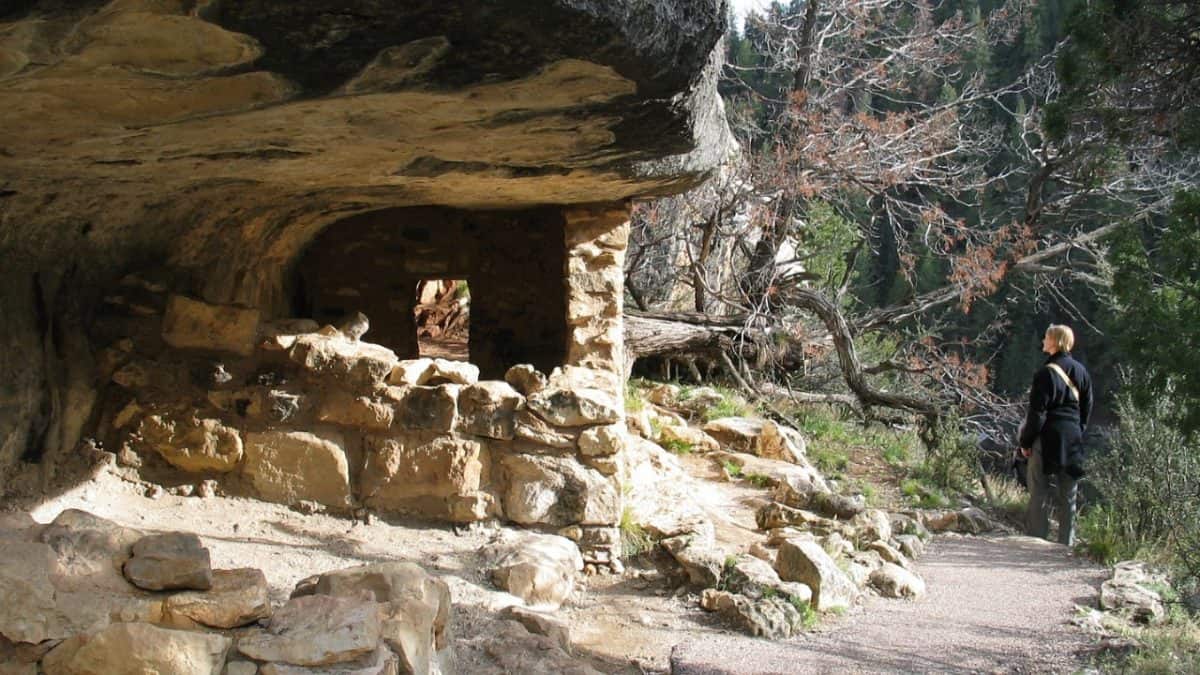
- Crowds: Moderate
- Water: No
- Restrooms: No
- Distance to Flagstaff: 11 miles
As its name suggests, this particular dispersed camping area is situated right next to the Walnut Canyon National Monument. As such, it’s a great option for folks who want to explore this unique location and its cliff-dwelling rooms made by a pre-Columbian civilization called Sinagua. It is also a good choice for those looking to do some dispersed camping east of the city.
Besides the cliff dwellings mentioned above, this location also offers breathtaking views of canyon walls. It’s one of those places that are definitely worth a visit, especially once we take into account the fact that the road that leads here is in a very good state. You won’t need a rough-road rig to visit the Walnut Canyon!
Just like in the case of most other dispersed camping areas near Flagstaff, you won’t find restrooms or dependable water sources at this place. Therefore, make sure to prepare yourself accordingly, and give your best to follow the “leave no trace” principles while camping near the Walnut Canyon.
To get there, head east via I-40 until you reach Walnut Canyon Road, and then follow this road south. Just before you reach the National Monument itself, turn east onto Forest Service Road 303, and you’ll notice the campgrounds right away. An important thing to mention here is that camping along Walnut Canyon Road itself is not allowed.
Cinder Hills OHV Area
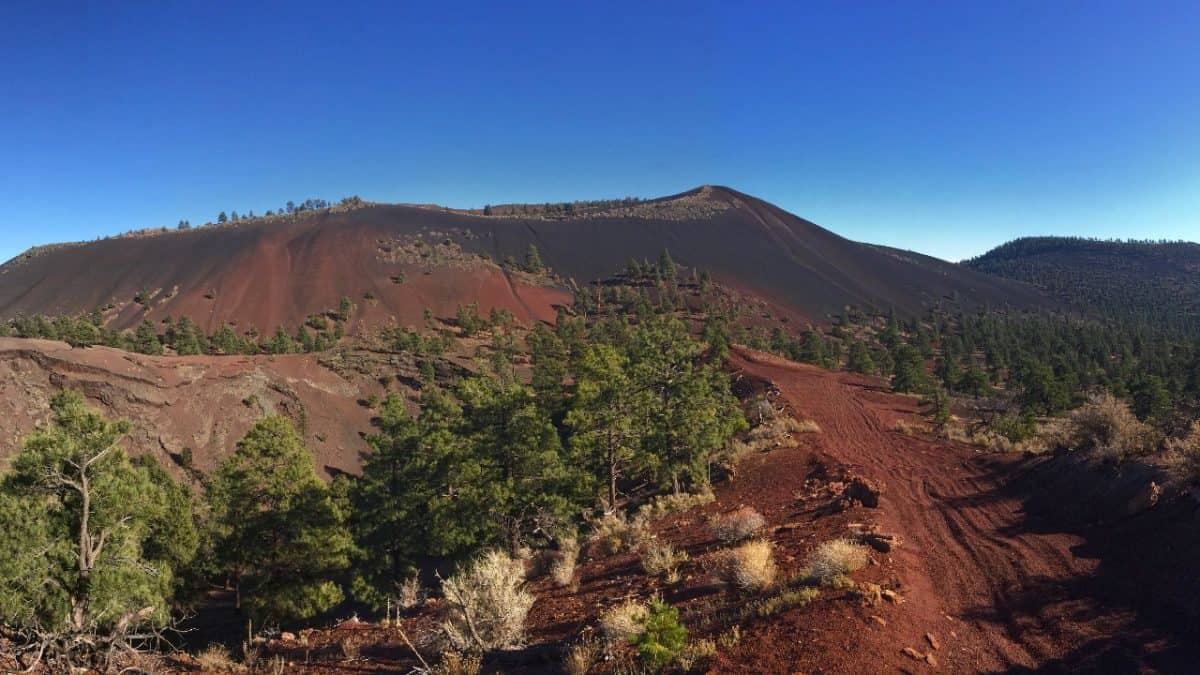
- Crowds: Busy
- Water: No
- Restrooms: No
- Distance to Flagstaff: 15 miles
The “OHV” in the name of this place stands for “Off-Highway Vehicle”, which turns it into an extraordinary choice for people hoping to do some ATV driving or off-roading near Flagstaff. The Cinder Hills OHV Area is located northeast of the city and is yet another of the dry camping sites, i.e. it has no bathroom facilities or reliable water sources.
One of the most important things to say about this particular dispersed camping area is that it’s incredibly popular. Here, you can expect crowds, noise, and a lot of dust. It goes without saying, but the Cinder Hills OHV Area shouldn’t be your top-priority destination if you’re looking for some peace and quiet in the backcountry.
Most camping enthusiasts set up their tents right on Forest Service Road 776. If you’d like your camping spot to be a bit quieter, though, head a bit further to the northeast until you reach the Forest Service Road 244. The spots along this road tend to be a bit more peaceful.
And to get to the Cinder Hills Off-Highway Vehicle Area, you will have to leave Flagstaff from the northern side via Highway 89 and follow it for about 8 miles. Take a right on the Forest Service Road 776 and keep driving for a mile or two before looking for a suitable camping spot.
Ashurst Lake
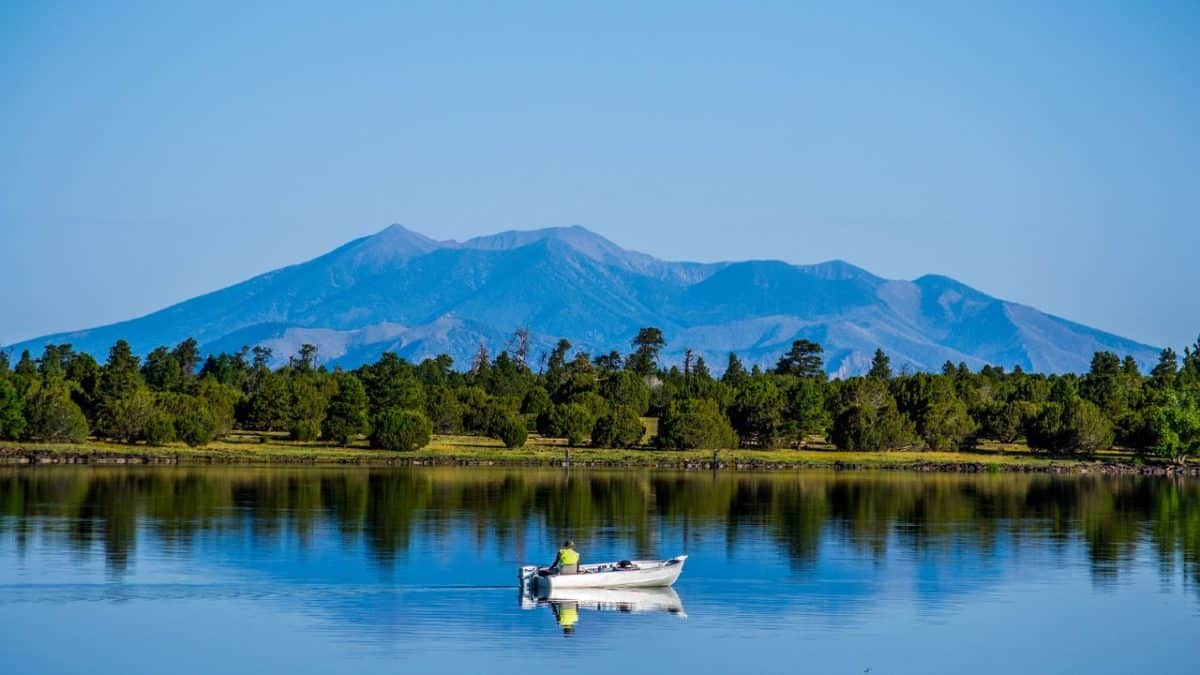
- Crowds: Moderate
- Water: No
- Restrooms: No
- Distance to Flagstaff: 20 miles
Featuring two developed campgrounds, the Ashurst Lake region is one of the most beautiful spots in the entire Coconino County. What makes this area even better for camping enthusiasts is that there are some genuinely amazing dispersed sites even before you reach Ashurst Lake itself.
Here, you will have easy access to the surrounding wilderness, as well as to the Arizona Trail. It’s a great option for all those looking for a not-so-crowded place to do some dispersed camping, as well as for folks who find the campgrounds at Marshall Lake – which I’ll describe below – full.
The Ashurst Lake itself is a medium-sized lake and an excellent spot for a wide variety of activities, from canoeing to fishing. There’s a graveled road that goes around the lake and makes it easy to explore the entire area by bike. If you’re someone who likes taking photos, you’ll find that the San Francisco Peaks stand picture-perfect as the background.
How does one get to Ashurst Lake? Leave Flagstaff from its southern side by following Lake Mary Road until you reach the Pine Grove Campground, and then turn left on 82E. Look for campgrounds in the area between the Horse Lake trailhead and the Ashurst Lake itself.
For more awesome camping spots in the U.S., check out our post on the best dispersed camping near Telluride, Colorado.
Marshall Lake
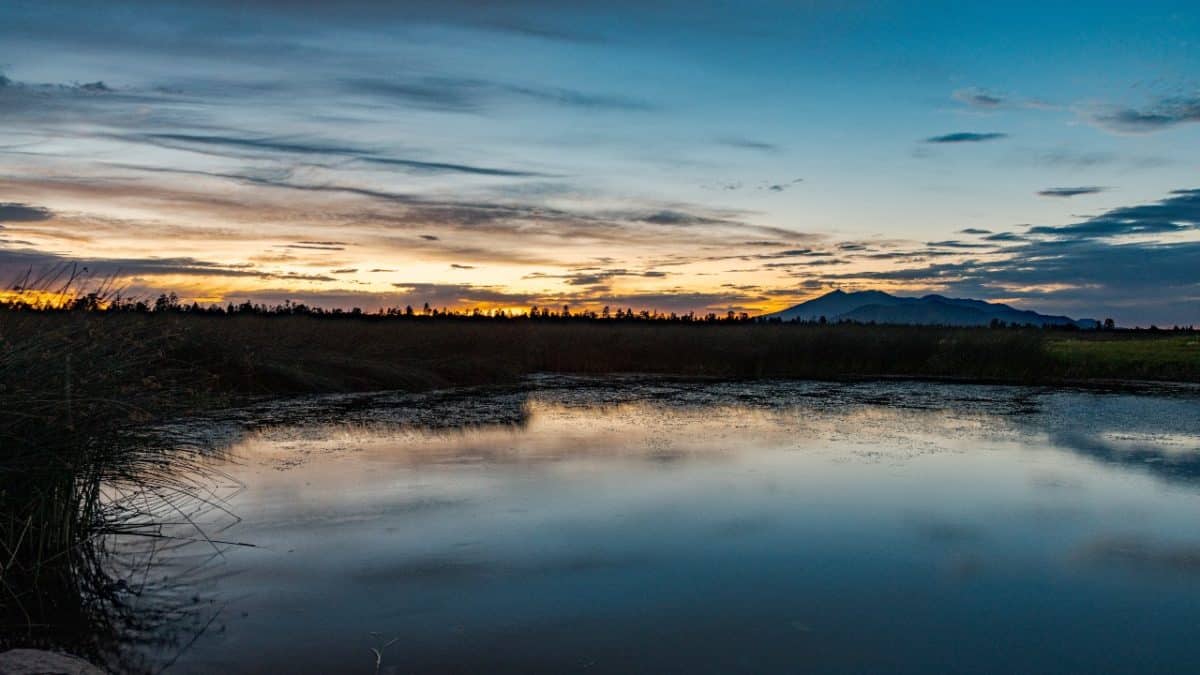
- Crowds: Busy
- Water: No
- Restrooms: No
- Distance to Flagstaff: 15 miles
Next up is Marshall Lake, which is yet another of Coconino County’s most picturesque regions and one whose surrounding area provides plenty of space for dispersed camping. It is located only 15 miles to the southeast of Flagstaff and getting there requires no more than 15 to 20 minutes of driving.
While this is a genuinely large camping area, it’s also one that’s very busy – do not expect solitude here. On the plus side, the well-known Arizona Trail goes right through this area and turns it into a perfect choice for all those wishing to supplement camping with trekking or mountain biking.
An important thing to mention here is that this is not an actual lake, despite its name. It is rather a marshland, but a very pretty one at that. In addition to the fact that the aforementioned Arizona Trail passes right through it, Marshall Lake is also very close to the Coconino National Forest.
You will have to head south from the city and follow Mary Lake Road until you reach Forest Service Road 128. Take a left there and start searching for a nice camping spot after about a mile of driving. It goes without saying, but you’ll have to be self-sufficient while camping in this region – there are no facilities of any kind whatsoever.
Pumphouse Wash
- Crowds: Busy
- Water: No
- Restrooms: No
- Distance to Flagstaff: 13 miles
Situated just off Highway 89A, about halfway between Sedona and Flagstaff, the Pumphouse Wash is a dispersed camping area that’s held in high regard by anyone who has ever camped there. And that’s not only due to the fact that this is an actual designated dispersed camping area but also because it provides easy access to other dispersed campsites near Sedona and Oak Creek Canyon.
Here, the camping grounds are easily accessed by regular passenger vehicles and are organized in 4 loops. However, even despite all that, they still don’t have any restroom or water facilities, which means that you’ll have to come here well-prepared.
Getting to the Pumphouse Wash designated camping area is as easy as it gets. Go to the south of Flagstaff by following 89A until you reach Forest Service Road 237. Once you’re there, just look for the signs signifying designated campgrounds.
An important thing to mention here is that camping outside the designated area brings the risk of getting ticketed, so be careful about that.
Willard Springs Road / Schnebly Hill Road
- Crowds: Busy
- Water: No
- Restrooms: No
- Distance to Flagstaff: 18 miles / 22 miles
With both of these spots being a bit further away from Flagstaff than most of the other areas on my list, I’ve decided to just lump them together.
Willard Springs Road is situated just off Interstate 17, to the south of Flagstaff, and is often quite busy with campers. The thing that makes it so popular is how easy it is to access it.
You just have to follow the aforementioned I-17 and you’ll see the Willard Springs Road on your right side after some 17 miles of driving. Once you take the turn, you’ll have to drive for one more mile before the first campgrounds appear.
Schnebly Hill Road, on the other hand, makes for some wonderful dispersed camping even despite its distance from Flagstaff. It’s a particularly great option for outdoor enthusiasts planning to explore Sedona. This is because the Schnebly Hill Road itself leads directly to Sedona, although traversing it can take some time given its ruggedness.
Read our guide to dispersed camping in Michigan as well.

I love hiking, backpacking, and camping. From the Camino de Santiago to the West Highland Way in Scotland or simply a great day hike on the weekend. Hiking refreshes me, my mind, and keeps my body reasonably fit. So far I have walked three Camino routes and many other long distance hikes in the UK, Canada, and around the rest of Europe. One of the best was my hike up Ben Nevis.

